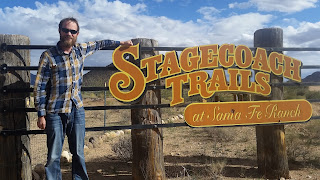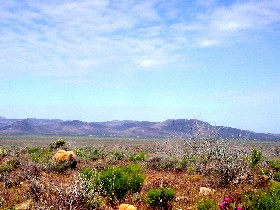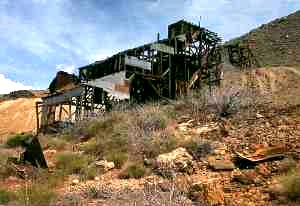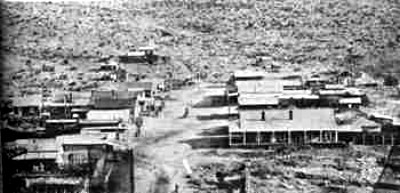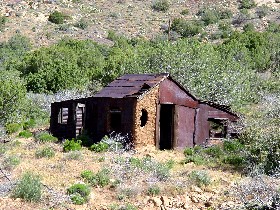LOCATION AND HISTORY
Spring
Valley Ranches is located in one of Arizona’s most scenic areas, just
off old Historic Route 66, near the town of Hackberry. Hackberry, in its
hey-day, was a bustling cattle and gold mining town. Today, it is a
tourist destination for those interested in revisiting and reminiscing
about cross-country travel along old Route 66.
Spring
Valley Ranches is nestled in the foothills of the pinyon pine-scented
Peacock Mountains only 25 miles northeast of Kingman, Arizona. This
scenic ranch was once a working cattle ranch that has been named after
the abundant natural springs that are found on the ranch. Rich in
history, Spring Valley Ranches’ natural springs provided precious water
for native Americans, pioneers, and U.S. Calvary.
Spring Valley Ranches comprises about 7,130 acres of private land. Parcels range in size from 5 to 97 acres.
WILDLIFE
Wildlife
abound on the ranch. Deer, elk, antelope, fox, coyote, javelina,
bobcats, skunks, raccoons, and an occasional mountain lion can be seen
in this pristine area.
AMENITIES
Spring
Valley Ranches is a perfect place for horse riding, hiking, bird
watching, exploring, or simply enjoying nature. Many property owners
have horses and enjoy an outdoor lifestyle. An 18-hole par 72 golf
course is located about 12 miles away in the community of Valle Vista.
SERVICES
Many parcels have electrical service (provided by Mohave Electric Co-op) and telephone service (provided by Frontier Telecommunications). All parcels are suitable for alternative energy power systems, such as solar and wind energy systems. Portions of the ranch are served with cellular telephone service provided by companies such as Mohave Wireless, Verizon, Cingular, Cellular One, Sprint, etc.
Propane gas
(LP) delivery is provided by several companies in the Kingman area,
such as Northern Energy, Graves Propane, and Ferrellgas.
Water is
provided by your own private well, hauling in your own water, or
delivery by a private delivery company. Spring Valley Ranches was named
for the many natural water springs located throughout the ranch.
Additionally many good wells have been drilled throughout the ranch.
Trash containers located near the entrance to the ranch are provided by a local co-op service for a nominal monthly fee.
Weather
Spring
Valley Ranches experiences weather similar to Kingman, Arizona, except
that temperatures are consistently about 5 degrees cooler. Because
Spring Valley Ranches is located in the Peacock Mountain Range, and at a
higher elevation (4,000 - 5,400 feet) than Kingman, more precipitation
and precipitation in the form of snow and freezing rain is typical.
ACCESS
All of the parcels were professionally surveyed and staked, making clear identification of parcel corners easy.
All parcels have full physical and legal access by dedicated public or county roads.
GRAZING
Arizona
is an open range state. This means that cattle pretty much graze where
ever they prefer. It also means you may fence the cattle out of your
property. Fencing must be suitable for this purpose.
Land
usage within Spring Valley Ranches is governed by sensible C.C.&R’s
(Covenants) which help protect your real estate investment. The basic
rules are as follows:
1.
Houses must be at least 1,000 sq. ft., site built or manufactured.
Manufactured houses must be 5 years or newer from date of manufacture to
date of placement on your parcel.
2. Parcels may be sub-divided up to 5 ways with no split parcel being smaller than 5 acres.
3.
No commercial use of parcels is allowed. Parcels are to be used for
single family residential use, limited recreation use, and
non-commercial ranch and farming activities.
4. Septic systems must be installed prior to or in conjunction with the construction of a house.
5. No burning or burying of trash or rubbish on a parcel.
PROPERTY OWNERS ASSOCIATION
The
Spring Valley Ranches Property Owners Association maintains the roads
within the ranch and assesses and collects annual dues from each
property owner for this service. Association membership is mandatory and
runs with the property ownership. The 2007 Annual Association dues are
$125 per parcel.
Spring
Valley Ranches is a great hideaway...a special place to build your
dream cabin, or just enjoy the good feeling of land ownership and
investment in a beautiful area.












